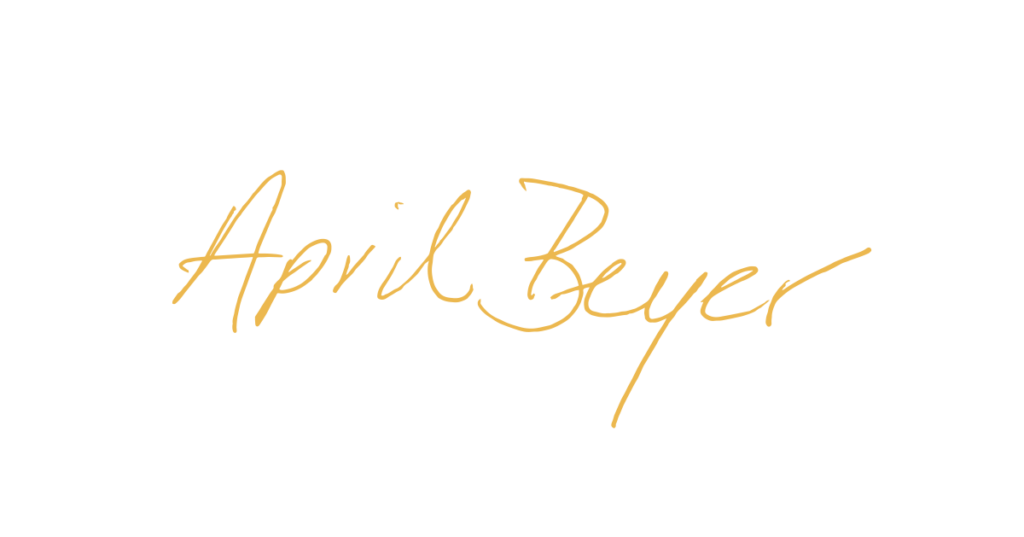In a rare, solitary moment between meetings and calls, I inhale a deep, calming breath as I gazed through my office windows at the hustle and bustle of sunny Santa Monica. I’ve always felt it interesting to consider that each person rushing by possesses their own unique life and stories, invisible to observers like me, but intrinsically woven into the fabric of their identity just the same. I like to believe that as they spend another day on their journey toward attaining whatever success looks like for them, part of their strategy is building relationships with others. This hope stems from the fact that meaningful connections are my passion, and also because they are what truly makes life so beautiful. Embracing one’s authentic self is crucial for building meaningful connections in both professional settings and one’s social life, fostering genuine relationships that uplift and support.
In these moments, I can’t help but reflect on the journey that brought me here.
Twenty-five years ago, I entered the industry of matchmaking, driven by a passion for helping people build purposeful connections.
As a business owner, matchmaker, and female motivational speaker, I discovered that the same principles of building meaningful connections between people were just as important in the business world. I started to see the impact that building strong relationships could have on the success of a company. After all, at its most basic level, matchmaking is a study of people, understanding what motivates them, aligning values and goals, and seeking a deeper knowledge of what creates long-term relationship success.
I witnessed firsthand how a workplace culture of transparency and trust could transform a business by improving employee morale, retention, and performance. I started applying the lessons I learned from matching couples to how I hired and managed my team, and I was amazed at the results. I realized that if I aspired to be an inspirational leader, the people who worked in my organization needed to feel connected to me and each other on a profound level. And so, I made it my mission to bring human connection back to the forefront of business leadership.
The Value of Openness and Honesty in Leadership
As a leader, you have the power to create a workplace culture that fosters trust, collaboration, and productivity. Transparency is the secret to building trust in the workplace. When leaders prioritize openness and honesty, it can inspire loyalty, deepen connections between colleagues, and create a more positive and supportive workplace culture. Isn’t this what we all desire for others and ourselves?
What does transparency in leadership look like in practice?
Imagine honesty as the tool of transparency. As a leader, when you are truly honest, with yourself and others, this shines through in everything you do. Safe and open communication in the workplace organically arises out of transparency about your organization’s goals, challenges, and successes, and creating a workplace culture that encourages employees to be honest as well. When your team feels respected and trusted, they’re more likely to be invested in your organization’s overall success and collaborate to achieve shared goals. Most importantly, when you are open about your own personal and professional goals and why they matter to you, you create an instant connection within your team. Developing social skills, such as empathy and understanding, is crucial in this process as it motivates people to respect and support the person, not just the boss or the business. People will want to work with you because they’ll see themselves as part of the bigger picture. This is the foundation for building relatable connections at work.
On the other hand, leaders who don’t believe in transparency create confusion and chaos. One of the main factors that lead to micro-management is a lack of trust in your team. And, you can’t trust someone unless you know them. When employees feel disrespected or micro-managed, they are more likely to become disengaged, leading to increased corporate divorce rates, which is costly for your business. Rather, build resilient teams by practicing honesty and openness throughout your hiring and team building processes.
In addition to building trust and engagement in the workplace, transparency fosters effective communication and collaboration. When everyone is empowered with a shared understanding of not only the company’s goals and values, but also how your own, and how they work together, it’s natural to discover common ground. This, in turn, leads to stronger relationships and deeper connections that will benefit your business for years to come. The value of community within an organization cannot be overstated.
At the end of the day, honesty and openness are key qualities of effective leadership. It has been my experience that teams built on respect stand the test of time and are more likely to overcome obstacles and achieve shared success. By prioritizing transparency in the workplace, leaders can cultivate stronger, more connected teams that will find incredible success in today’s fast-paced business environment.
It requires courage and vulnerability to be truly transparent, but as a female keynote speaker who has empowered organizational transformation worldwide, I can confidently tell you that the rewards are worth it. Not only do you create a stronger company, but you also do so without sacrificing important aspects of your own well-being in order to grow and maintain success. It doesn’t have to be lonely at the top!
5 Proven Strategies for Building Relationships and Creating Transparency in the Workplace
To build trust and engagement in the workplace, it’s essential to lead with transparency and prioritize authentic, relatable connections. Implementing these strategies not only fosters a culture of trust and collaboration but also emphasizes the importance of relationship building and making personal connections, which are key outcomes for a transparent and collaborative work environment. It doesn’t require more time or resources to achieve this, only authentic intention. I’ve witnessed firsthand the transformational power of the following cultural change management strategies, and I believe that they are key to creating a culture of trust and collaboration that empowers employees to perform at their best.
Embracing Honesty
Time and again, I’ve watched as the power of honesty builds strong connections. Whether you are leading a team or working with clients, embracing honesty in leadership is a core value that will have a profound impact on the success of your organization.
It’s easy to fall into the trap of thinking that honesty simply means telling the truth. But the act of being an honest leader is greater than that — it’s about practicing active listening in the workplace, being willing to listen to feedback, having the courage to admit your mistakes, and working together with your team or clients to find solutions to problems.
Honesty in yourself leads to honesty in your team.
Leaders who embrace honesty and transparency cultivate innovation, collaboration and creativity as their employees feel safe expressing themselves without fear of judgment or retribution.
Of course, practicing honesty and transparency is not always easy. It can be uncomfortable to admit your mistakes, reveal a personal story, or give tough feedback to others. However, it’s important to remember that being honest is not about being harsh or critical. Rather, it’s about approaching difficult situations with empathy and a willingness to work toward a solution. Authentic transparency means sharing your joy, hopes, and dreams, as well as your struggles.
As you strive to build a culture of honesty and transparency within your team or with your clients, keep in mind that it’s a journey, not a destination. At times you may stumble or fall short of your goals, and that is okay, in fact, it is expected. The key is to remain committed to the process and keep working towards creating a culture of trust and openness. When you demonstrate vulnerability, your team will be inspired to as well. Communication expert Rachel DeAlto also emphasizes the importance of honesty and transparency, advising that these qualities are essential for building trust and fostering effective communication within teams.Fostering Connection Through Active Listening and Open Dialogue
As someone who has had the honor of unearthing what is in the hearts and minds of countless individuals, I recognize that most of us seek the genuine connection that arises out of feeling heard and understood. When you understand how to apply this human desire to your leadership style, you can develop the active listening skills that your employees need and deserve.
Incorporating active listening in the workplace starts by setting aside distractions and really focusing on the person you are speaking with. You show someone how much they mean to you by offering them your full attention, which means putting away your phone, closing your laptop, and being fully present at the moment.
This level of attentiveness includes paying attention to your nonverbal cues. It’s vital to demonstrate open body language and make eye contact when actively engaging with your team and clients. Paying close attention also allows you to observe important patterns and emotions.
Another key strategy for ensuring employees feel heard is to encourage feedback and discussion. This can be accomplished through regular check-ins, team meetings, or designating times for employees to ask questions and share their thoughts and concerns.
Active listening and open dialogue are not only crucial in the workplace but also enhance your effectiveness at networking events, fostering personal connections in various settings.
Fostering connection through active listening and open communication in the workplace is an on-going process that requires consistent effort and attention. By prioritizing these strategies in your day-to-day interactions, you can create a more positive, supportive, and productive work environment for everyone. Remember, when people feel heard and valued, they will be fully committed to their work, and more invested in the overall success of your organization.
Ask for Team Support
Asking for team support offers an excellent opportunity to create a more positive and productive work environment. When doing so it is important to be clear about your goals and priorities. You create a shared sense of purpose and direction when you clearly communicate your vision and expectations to your team. This fosters an understanding of how their work fits into the bigger picture which will inspire them to work harder towards shared goals. Asking for team support is also a strategic way to create relationships based on mutual respect and collaboration, enhancing the team’s overall dynamics.
As a leader, it’s essential to recognize that you don’t have all the answers and that your team members can offer unique perspectives and experiences. By inviting constructive criticism and suggestions for improvement, you can create a culture of collaboration and continuous learning.
Similarly, it’s imperative to recognize and celebrate your team’s contributions and achievements. Acknowledge and support successes with shout-outs and other recognition to boost morale and inspire your team to continue to exceed your expectations.
Finally, it’s important to give back to your team and support their careers by offering guidance and creating opportunities for your team to grow and develop their skills. When you invest in your team’s growth and development, you demonstrate that you value their contributions and recognize that your success is dependent upon theirs.
Overcoming Workplace Transparency Barriers
I acknowledge that creating a culture of transparency in the workplace may feel like a seemingly insurmountable challenge, but with the right strategies, it is entirely possible. As a business owner, matchmaker, and female keynote speaker, I’ve witnessed firsthand how essential transparency is for building meaningful relationships and fostering a productive work environment.
Overcoming barriers to transparency requires a multi-faceted approach, including addressing issues such as fear of judgment, lack of trust, and organizational culture. Overcoming these barriers is key to achieving one’s own relationship success in the workplace.
Overcoming Fear of Judgment
One of the most significant barriers to workplace transparency is fear of judgment. Many employees are hesitant to express themselves for fear of being criticized or judged by their colleagues or leaders. To overcome this, it’s essential to foster a work environment that is not only fun but also supportive and open, where employees feel safe to express themselves. By improving communication and creating such an atmosphere, you encourage open and honest communication, helping your team members feel more comfortable sharing their ideas, opinions, and concerns.
Reducing Lack of Trust
Another common barrier to transparency is a lack of trust. If employees don’t trust their leaders or colleagues, they may be less likely to speak openly. To combat this, you should focus on ways to establish trust. This means being transparent about decision-making processes, sharing information openly, improving communication in the workplace, and following through on commitments. Reducing lack of trust is crucial for fostering personal connections among team members, enhancing their ability to work together effectively.
Implementing Culture Change Management with Relationship Expert Insights
Organizational culture can also play a role in openness and transparency. If leaders and managers encourage secrecy and control rather than openness and collaboration, it will lead to fear and mistrust. To eliminate this, insights from a relationship expert can be invaluable in implementing culture change management to promote transparency, guiding you to create a culture of trust, respect, and open communication in the workplace by valuing diverse perspectives, encouraging collaboration, and rewarding transparency.
Ultimately, creating a culture of transparency in the workplace requires consistent effort and attention. As a leader, you must be willing to lead by example and model the behavior you want to see from your team members. By prioritizing transparency and open communication in the workplace, you can build strong and meaningful relationships and create a more engaged and committed workforce.
Creating a Safe Space for Everyone to Express Their Authentic Self
Establishing transparency in leadership is one of the most influential ways to foster stronger connections within your team and achieve sustainable success for your organization. By implementing the strategies outlined above you can break down barriers and create a workplace culture of collaboration and mutual respect. It has always been important to me to share the knowledge and experience I’ve gained through my work as a CEO and female keynote speaker to help others on their leadership journey. When you apply these real-life techniques to your own leadership style, it will amplify your impact. Commit to leading with transparency, and watch your team, and organization, thrive! Additionally, these strategies come endorsed by a USA Today bestselling author, adding an authoritative backing to the advice provided.























